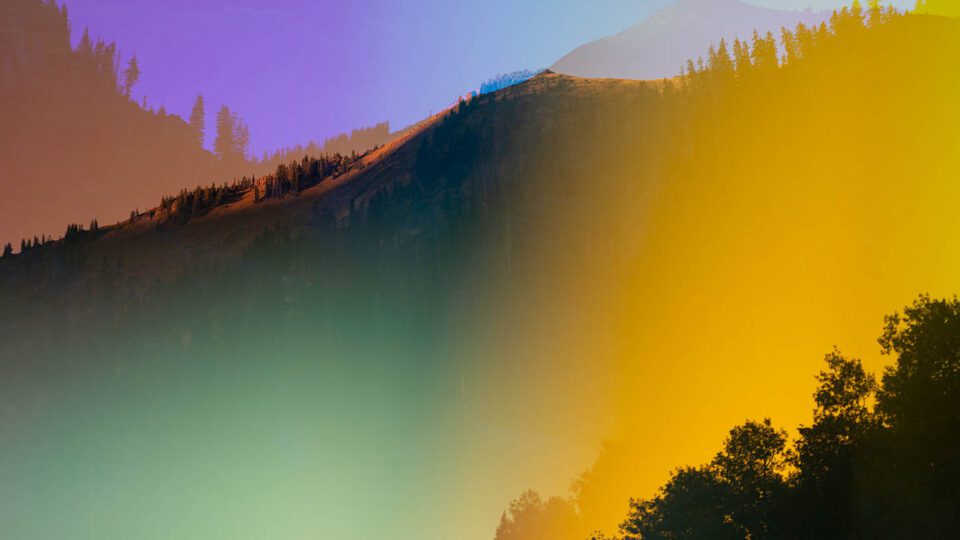The history of landscape photography is long, rich and complex. It has developed significantly since its inception in the 19th century, evolving from straightforward documentation into a dynamic genre that explores and critiques humanity’s shifting relationship with the environment. Here, we share the work of five contemporary photographers, previously featured in print editions of Aesthetica Magazine, who are pushing beyond traditional forms of representation. These artists experiment with colour, light and physical interventions to offer fresh perspectives on wild places. From shimmering curtains and armies of desk lamps, to layered mountainscapes, fictional planets and holographic plant life, this selection captures the bold and exciting ways in which today’s image-makers are reimagining the subject matter.
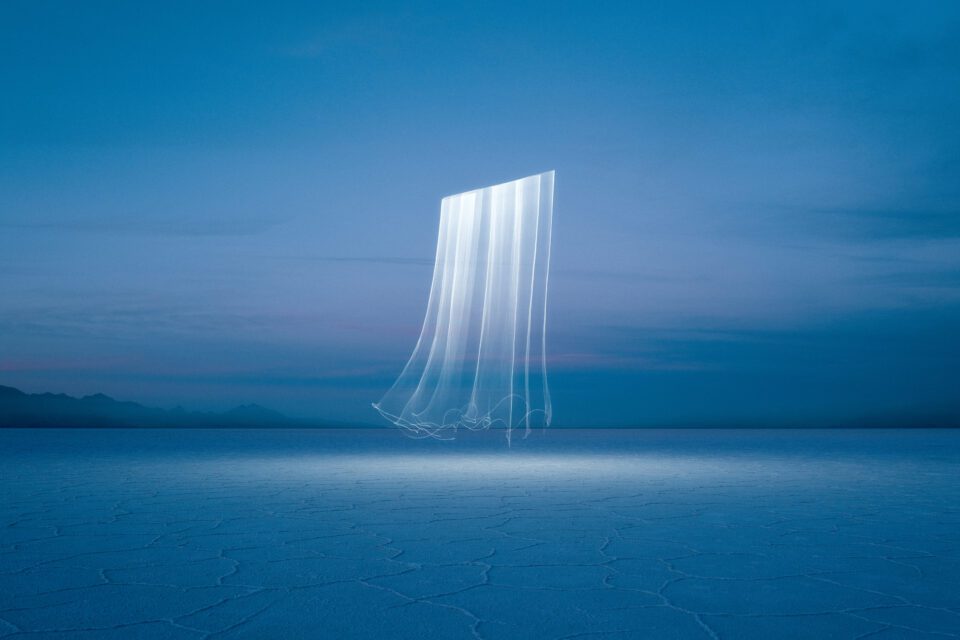
Reuben Wu’s (b. 1975) images are instantly recognisable. The artist is a National Geographic photographer, and he is known for painting with light. Wu uses drones and long exposures to draw halos around mountains, or render glowing geometric shapes above landscapes, including glaciers, deserts and salt flats. He is driven by a desire to show familiar scenes from an alternative perspective. His newest series are Thin Places and SIREN. Shimmering white veils drop down from the sky, creating the illusion of a barrier between worlds. They mark a new direction for Wu. “Whilst my other work features decisive lines, these forms surrender to their environment.” Patterns are shaped not only by human hands, but by natural phenomena – including waves washing up on the shoreline. The compositions are eerily tactile; you almost want to reach out and touch the soft fabric, or to peel it back to see what lies behind the curtain.
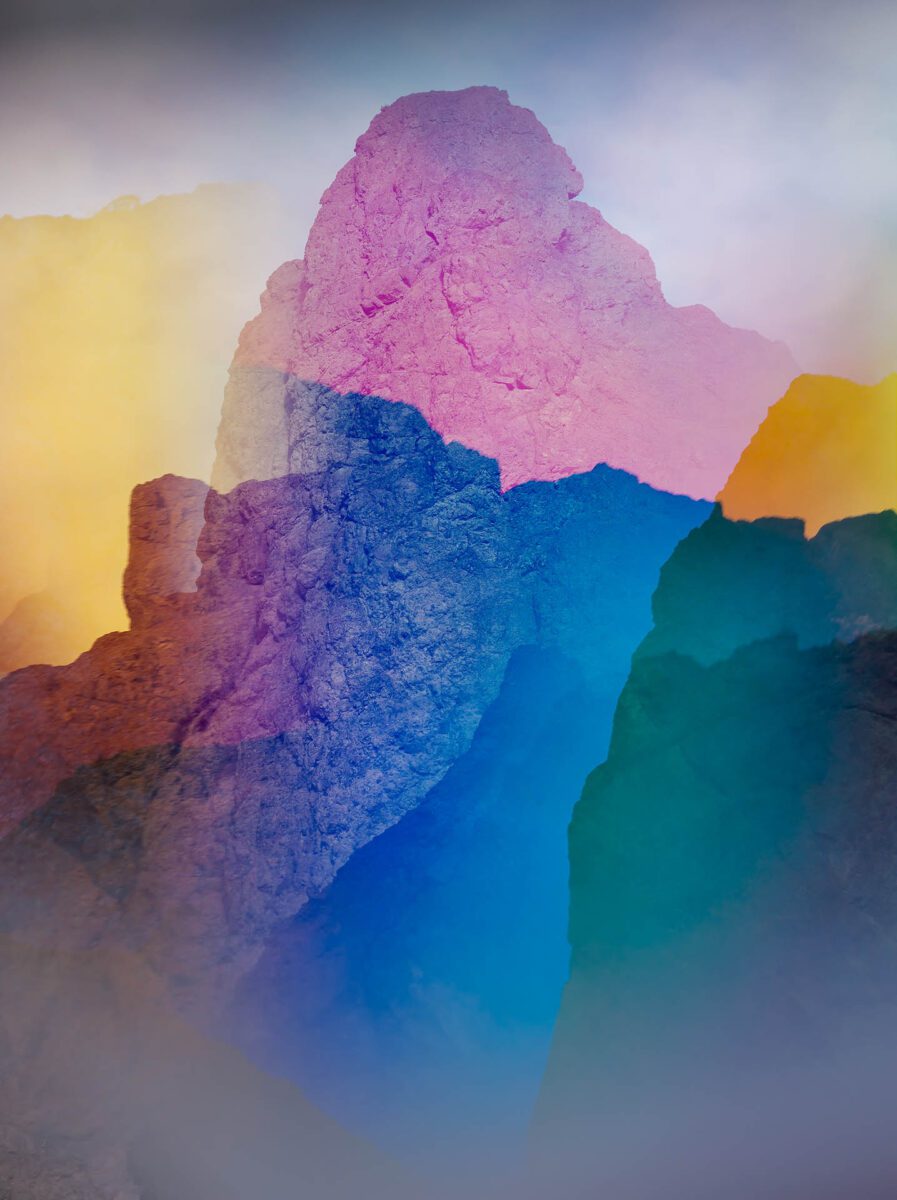
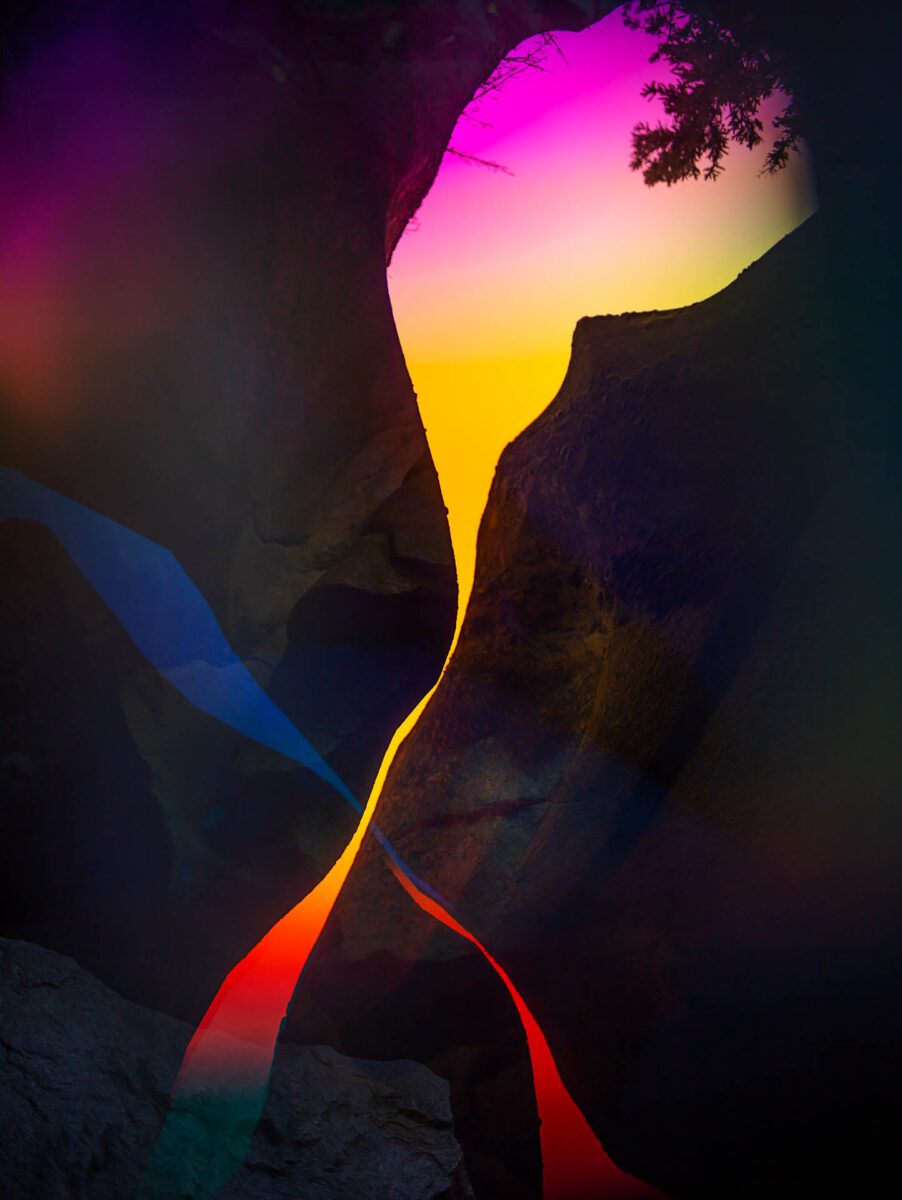
“The history of landscape photography is rife with men behind cameras attempting to offer the definitive view of a particular land feature,” says Terri Loewenthal (b. 1972), referencing the now-iconic images of Yosemite National Park taken by Ansel Adams and Carleton Watkins. “As a woman seeking to reimagine the genre, my work overlaps multiple vantage points and shifts colours into oversaturated hues, exposing the fallacy of a single objective view and offering a rich, sublime subjectivity in its place.” Every one of her artworks is a single-exposure, in-camera composition – layered, psychedelic and flooded with green, orange, pink, purple and yellow tones. Forests meld into mountains, seas bleed into rock formations – blurring the borderlines between reality and imagination. The artist’s works are on view at SOMArts and Heron Arts in San Francisco in late 2025, offering visions of the American landscape like never before.
terriloewenthal.com | @lowandtall
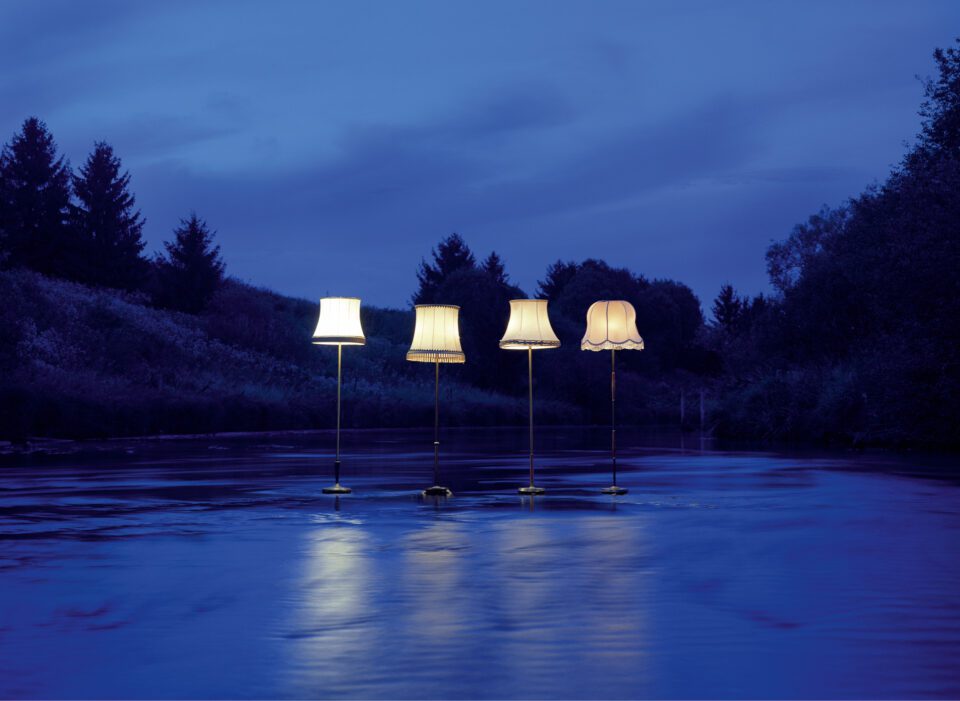
Forests appear in mythology and folklore all around the world. Famous examples include Nottingham’s Sherwood Forest, which features in the legends of Robin Hood, or the Sagano Bamboo Forest in Kyoto, an otherworldly grove which acts a metaphor for strength and protection. The works of Norway-born Rune Guneriussen (b. 1977) are rooted in this same magic. Lamps appear nestled amongst lush green ferns, climb up tree trunks and stand en-masse amidst sweeping vistas. Whilst these scenes make for compelling images, Guneriussen is most interested in the process of working with objects in the landscape, which he has been doing since 2005 all over Norway. “It is not as much photography as it is about sculpture and installation,” he says. “It involves the object, story, space and, importantly, the time in which it is made.”
runeguneriussen.no | @runeguneriussen
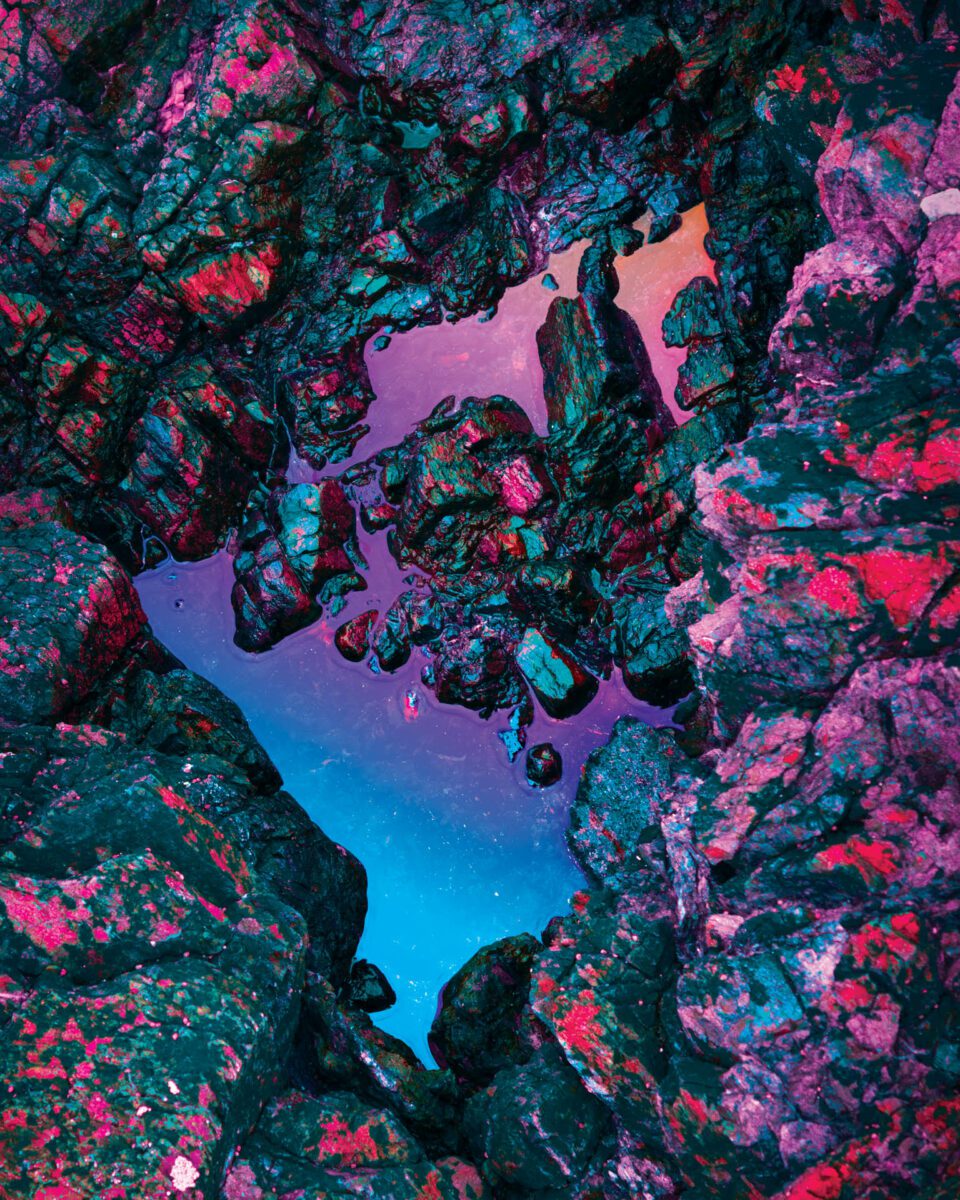
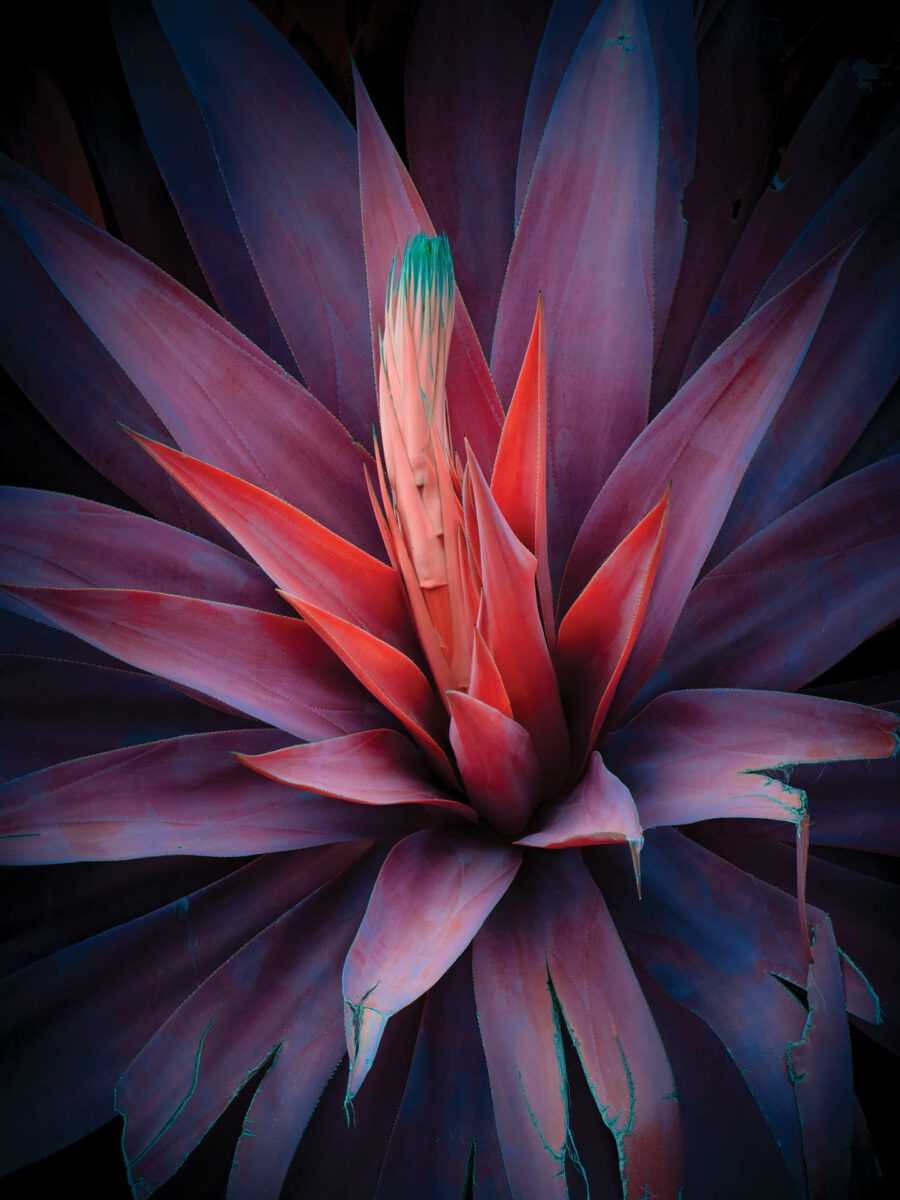
Rock formations, volcanic geology and lush foliage are key to Tom Leighton’s (b. 1981) alluring photographs. Here, we traverse holographic pools gleaming with luminous pinks, bold purples and oranges. Whilst these shots might seem otherworldly, they offer lessons about how life on this planet came to be. Leighton confronts us with “rare evidence of the colossal pressures which created the surface of the Earth … a manifestation of the planet’s physical history: times of stability veined with turbulent change, fault lines which can be a metaphor for our current human landscape.” Elsewhere, the photographer takes us into the forest under cover of darkness, showing a glimpse of what we might see if human night vision were to evolve. The camera zooms in on intricate leaves at sunset – the moment when photosynthesis stops and respiration begins. These pictures occupy the borderlines between art, geography and botany.
tleighton.com | @tomleightonart
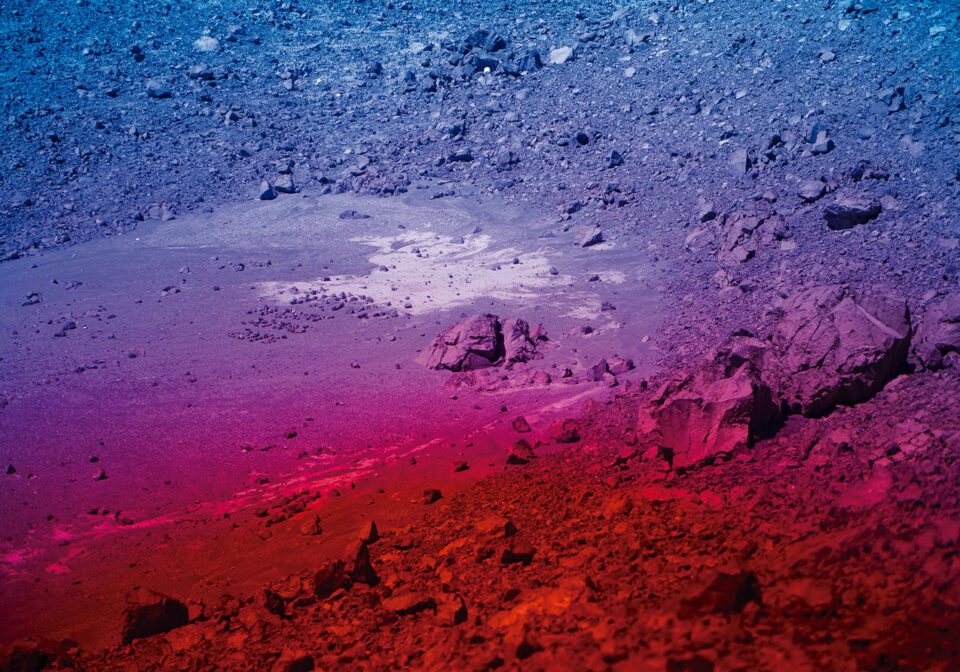
In the 19th century, French astronomer Urbain Le Verrier (1811-1877) presumed the existence of a planetary mass located between the Sun and Mercury, and named it Vulcan. By the mid-1800s, the idea gained traction, with others joining the hunt to find the lost planet. Yet, nothing was ever located. Vulcan was not there. In the following pages, however, Maria Leonardo Cabrita (b. 1989) turns back the clock. She imagines the discovery of a new cosmos and captures Vulcan’s geology on camera. These photographs were made on the real island of Vulcano, 20km north of Sicily. Steam rises from its volcanic surface, bathing barren landscapes in mist. Pictures are flooded with otherworldly neon hues; skies turn red, blue, orange, pink. Cabrita’s research-led project is particularly prescient right now. We are learning more about space than ever before, from innovations like NASA’s Curiosity Rover and the James Webb Telescope.
marialeonardocabrita.com | @marialeonardocabrita
Discover new photography inside every issue of Aesthetica Magazine.
Click Here to Subscribe & Save 40% ›
Words: Eleanor Sutherland
Image Credits:
1. Terri Loewenthal, Psychscape 170 (Rustlers Gulch, CO), (2022). Image courtesy of the artist.
2. Image courtesy of Reuben Wu.
3. Terri Loewenthal, Psychscape 602 (White Rock Canyon, AZ), (2018). Image courtesy of the artist.
4. Terri Loewenthal, Grottos 9 (Ute land), (2024). Image courtesy of the artist.
5. Rune Guneriussen, Evolution # 04 (2005). Courtesy of Galerie Olivier Waltman.
6. Tom Leighton, Flux, (2023). Image courtesy the artist.
7. Tom Leighton, Resurgence, (2023).Image courtesy the artist.
8. Maria Leonardo Cabrita, from Vulcano (2017-2020). Image courtesy the artist.


